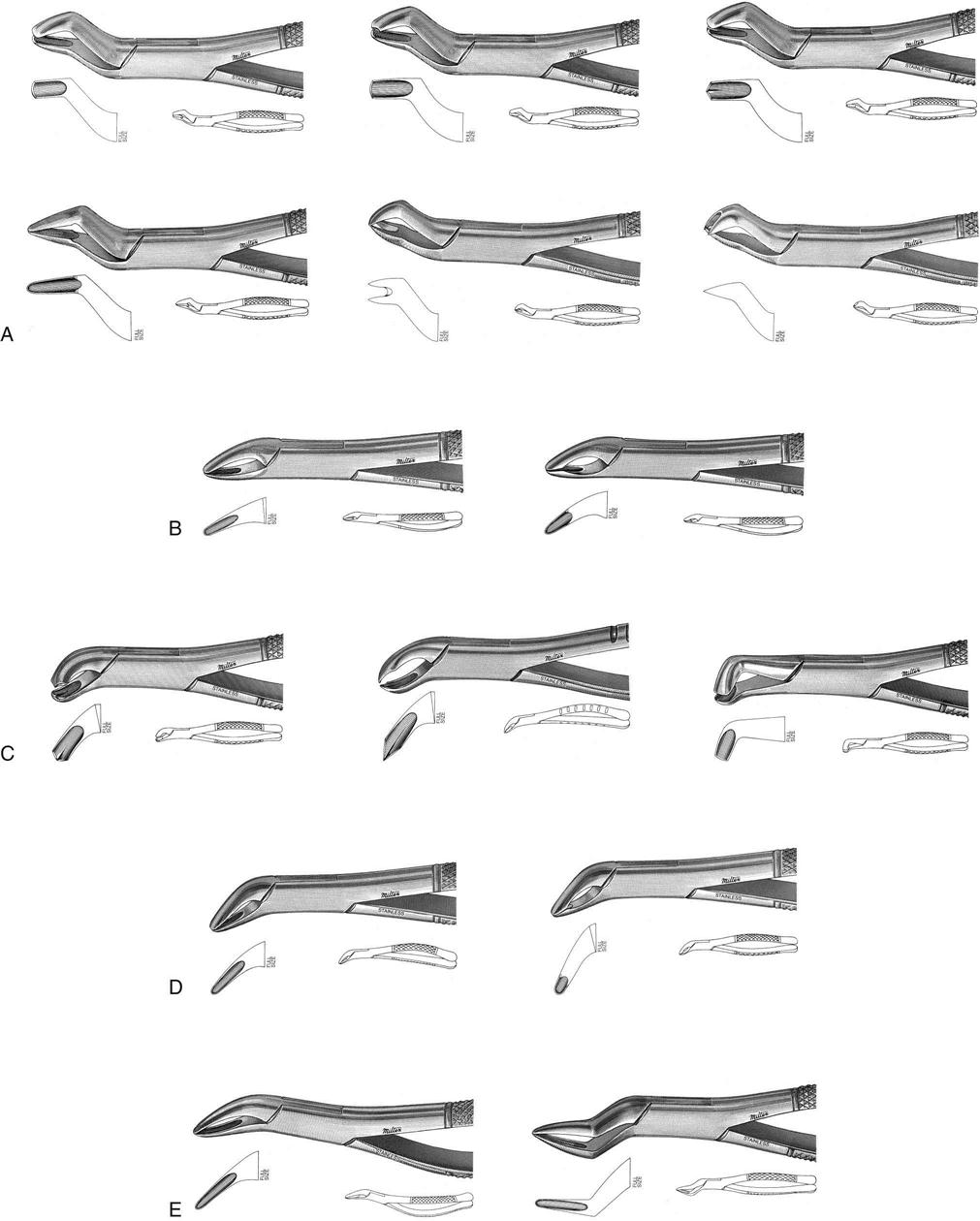Oral and Maxillofacial Surgery
Learning Objectives
1 Pronounce, define, and spell the Key Terms.
2 Define the specialty of oral and maxillofacial surgery.
3 Describe the importance of the chain of asepsis throughout a surgical procedure.
4 Identify and describe the function of the instruments used for surgical procedures.
6 Describe the types of postoperative care provided after a surgical procedure.
Key Terms
Alveolitis
Alveoloplasty
Asepsis
Extraction
Impaction
Luxate
Oral and Maxillofacial Surgery (OMFS)
Sutures
Oral and maxillofacial surgery (OMFS) is the specialty of dentistry that provides the diagnosis and surgical treatment of diseases, and the repair of injuries and defects of hard and soft tissues of the oral and maxillofacial regions (Box 26-1).
The general dentist is trained in basic surgical procedures, and many perform single tooth extractions within their practice. For more complicated procedures, dentists will refer their patient to an oral and maxillofacial surgeon.
The Surgical Environment
Oral surgery, even when performed in the general dental office, is just as much a surgical procedure as one performed in a hospital operating room. It is imperative for the dental team to have the patient’s clinical record, emergency equipment, anesthetic supplies, and surgical instruments readied before seeing the patient for a surgical procedure.
Patient Record
The dentist must have a complete patient record, which includes a current medical history, radiographs showing the area to be treated, recorded vital signs, appropriate charting of treatment, and the type of pain control methods that are prescribed before, during, and after surgery.
Signed Consent
Once the procedure has been reviewed with the patient or legal guardian, it is important that the responsible party sign a release form indicating that he or she understands the procedure to be performed and any possible complications that may occur.
Oral Surgery Instruments
Oral surgery instruments have specific uses and are designed to separate the tooth from the socket, to retract surrounding tissue, to loosen and elevate the tooth within the socket, and to remove the tooth from the socket. The instruments discussed in this chapter are oral surgery instruments most commonly used in surgical procedures. All surgical instruments are classified as critical instruments and must be sterilized after each use (Table 26-1).
TABLE 26-1
< ?comst?>
| Name of Instrument | Description of Its Use |
Periosteal elevator
 |
To separate and retract the periosteum from the bone that is holding the tooth in its socket |
Straight elevator
 |
Used to apply leverage against the tooth to loosen it from the periodontal ligament and ease the extraction |
Root tip picks
 |
Used for the removal of root tips, tooth fragments, or debris that may break away from the tooth during the extraction |
Surgical curette
 |
An instrument resembling a large spoon excavator. It is used after an extraction to clean the interior of the socket or to remove diseased tissue. |
Rongeur
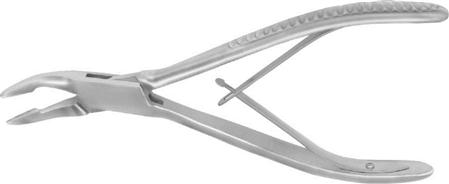 |
A scissors-shaped instrument with short blades used to trim alveolar bone. The rongeur is commonly used after multiple extractions to remove sharp projections and to shape the edentulous ridge. |
Bone file
 |
A flat working instrument that has large cutting grooves. Used with a push-pull motion to smooth the surface of the bone after use of the rongeur or to smooth rough margins of the alveolus. |
Scalpel
 |
A surgical knife used to make a precise incision into soft tissue. Scalpel blades are available in many sizes and styles. A one-piece disposable instrument consisting of a scalpel blade and handle is supplied in a sterile sealed package. Single-use blades are available to attach to a reusable metal handle, which is called a Bard-Parker. Common sizes of blades are #12 and #15. |
Hemostat
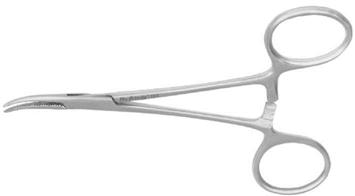 |
A hemostat has beaks with serrations or grooves and a locking mechanism on the handle, which makes it useful for grasping and holding an object or tissue. |
Needle holder
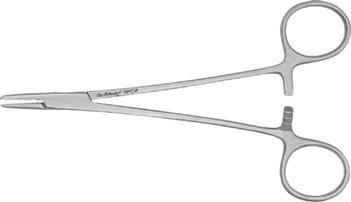 |
The needle holder resembles the hemostat, but the beaks are straight with fine serrations to firmly grasp a suture needle. |
Surgical scissors
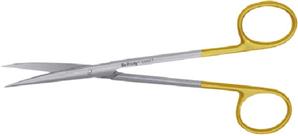 |
They are available in fine straight or curved blades. These types of scissors are used to trim soft tissue. |
Tissue retractors
 |
Used to grasp and hold soft tissue during surgical procedures. You must retract with extreme care to prevent trauma or damage to tissue. |
Surgical chisel and mallet
  |
Used to split a tooth for easier removal by tapping the mallet on the chisel. Helps in the removal of a tooth or to reshape bone. |
Surgical aspirating tip
 |
Used in a surgical procedure. The smaller tip easily fits into the socket or surgical site. |
< ?comen?>< ?comst1?>
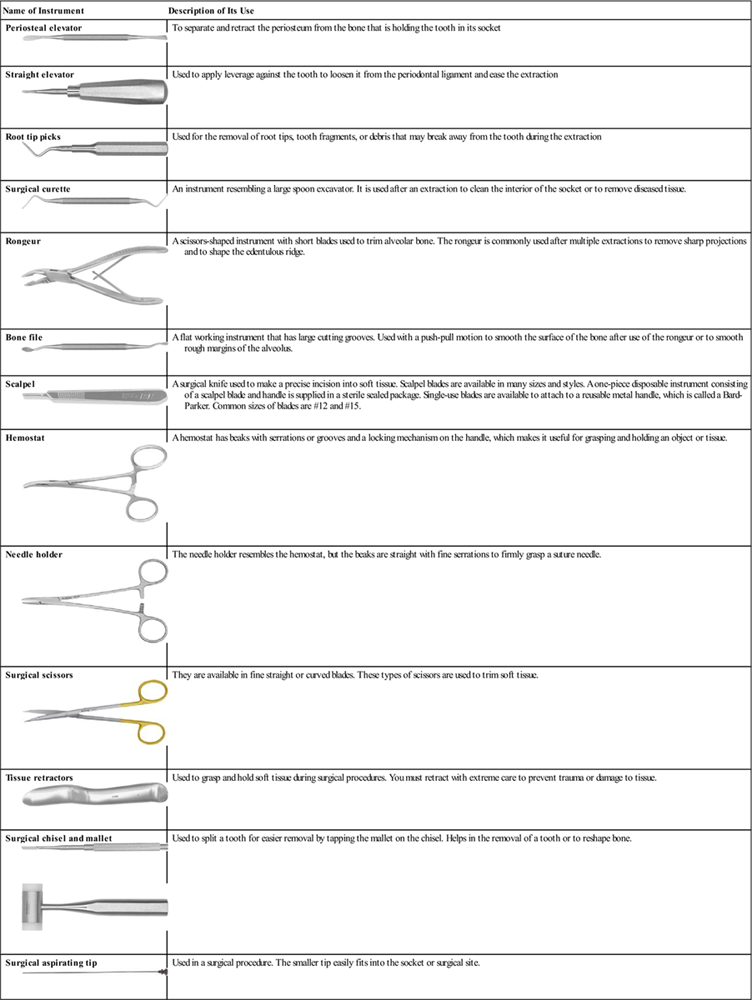
< ?comst1?>
< ?comen1?>
All images courtesy Hu-Friedy, Chicago, Illinois.
Extraction Forceps
Extraction forceps are available in many different shapes and designs to accommodate the dentist’s needs in grasping teeth with different crown shapes, root configurations, and locations within the mouth. The goal is to remove the tooth in one piece with the crown and root intact.
Forceps are used to remove teeth from the alveolar bone after they have been slightly loosened in the socket by the application of elevators. The handles, which are held firmly in a palm grasp, provide the dentist the leverage necessary to luxate and remove the tooth (luxate means to rock back and forth) (Figure 26-1).
Surgical Asepsis
Establishing and maintaining the chain of asepsis in a surgical procedure means that the instruments, surgical drapes, and gloves worn by the dental team must be sterile from setup to completion of the procedure. (Asepsis means the absence of pathogenic microorganisms.) Contact with anything that is not sterile will break the chain of asepsis and contaminate the surgical area.
See Procedures 26-1: Performing a Surgical Scrub, and 26-2: Performing Sterile Gloving.
Surgical Procedures
When preparing for a surgical procedure, specific criteria must be met for a smooth, efficient performance of procedural steps. Every surgical procedure requires preparation and advance planning by the dental team. See Box 26-2 for the surgical assistant’s role in oral surgery.
Forceps Extraction
Forceps extraction is often described as a “routine” or “simple” extraction. These terms are misleading because all extractions are considered surgical procedures. Use of these terms only implies that the extraction can be completed without extensive instrumentation.
A forceps extraction is performed on a tooth that is fully erupted, has a solid intact crown, and that can be grasped firmly with the forceps. Most “routine” forceps extractions will not require the placement of sutures.
Multiple Extractions
When several teeth are to be extracted at the same />
Stay updated, free dental videos. Join our Telegram channel

VIDEdental - Online dental courses


